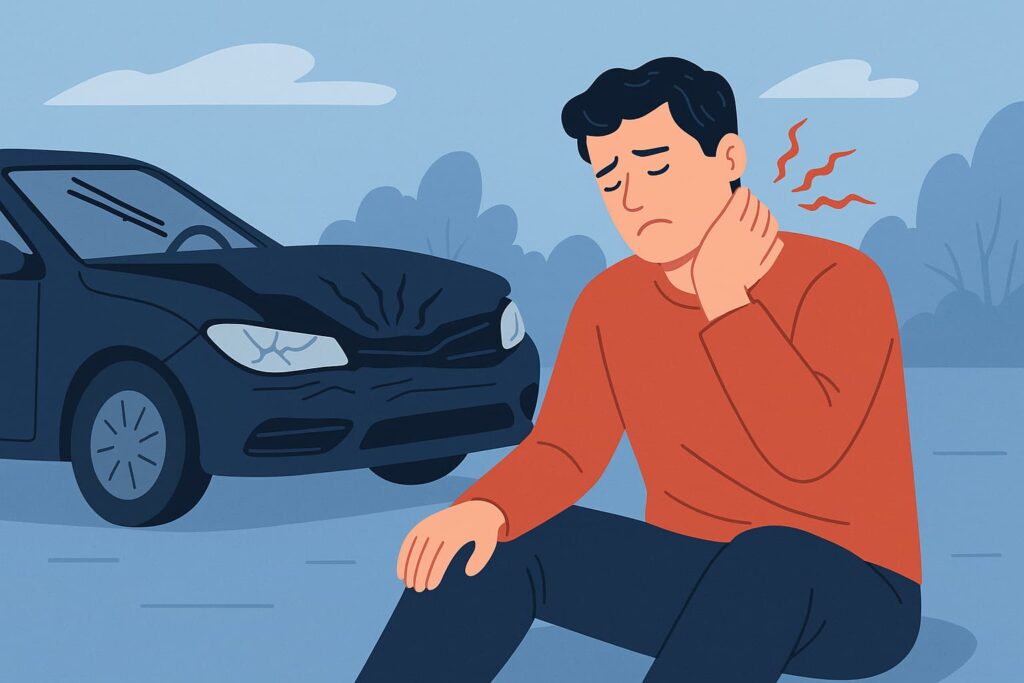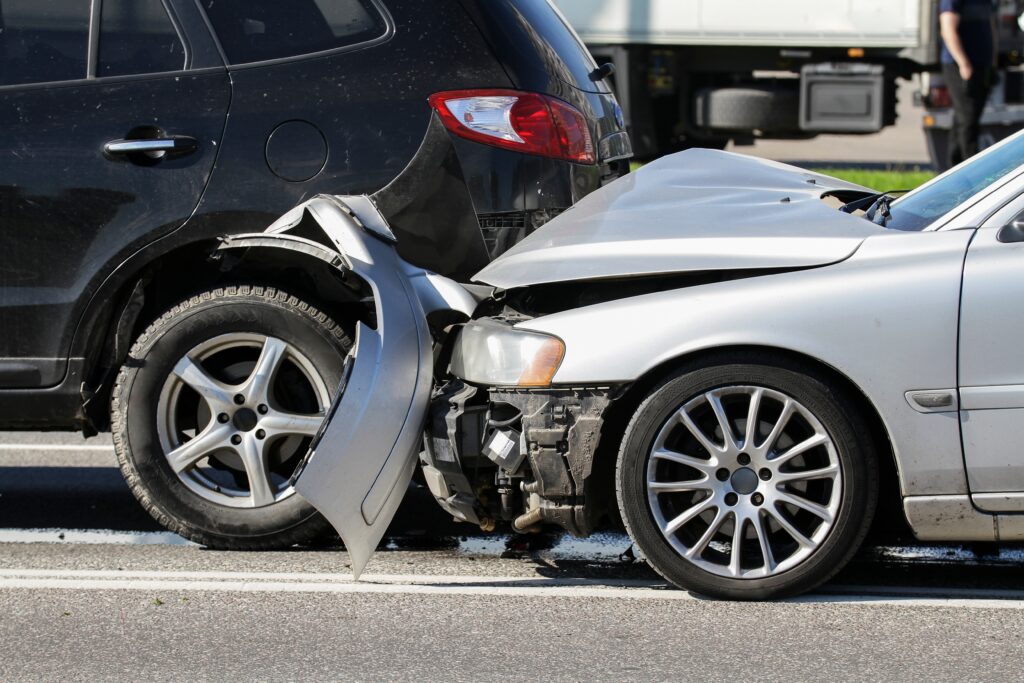The common causes of pedestrian accidents almost always point to preventable patterns of driver negligence, providing the first step toward clarity and accountability. Protecting your rights begins with a thorough investigation into the cause of the accident.
A personal injury lawyer can help you pursue a claim for compensation to hold the at-fault party accountable for their actions and provide the resources you need for your recovery.

Key Takeaways for Common Causes of Pedestrian Accidents
- Driver negligence stands as the single largest contributor to pedestrian accidents.
- Investigators often find that multiple factors, including roadway design and visibility, contribute to a collision.
- Determining liability involves a detailed analysis of police reports, witness statements, and physical evidence.
- Even if a pedestrian shares some responsibility, they may still be able to recover compensation from a negligent driver.
- A lawyer’s independent investigation can uncover the sequence of events that led to the incident.
Driver Negligence: The Leading Factor in Pedestrian Collisions
Most pedestrian accidents trace back to a driver's failure to operate their vehicle with reasonable care. Driver negligence in pedestrian accidents manifests in many ways, from momentary inattention to flagrant disregard for traffic laws.
When a driver's careless or reckless actions cause you harm, their choices become the focal point of your claim. Your legal team works to connect their negligent behavior directly to the accident and your resulting injuries.
Distracted Driving
A distracted driver poses a significant threat to anyone sharing the road, especially pedestrians. Distracted driving pedestrian accidents occur when a driver diverts their attention from the primary task of driving.
Any activity that takes a driver’s hands off the wheel, eyes off the road, or mind off their surroundings creates a dangerous situation. Reconstructing the moments before a crash often reveals that a simple distraction set the chain of events in motion.
Identifying this type of negligence requires a focused investigation into the driver’s activities. Common examples include:
- Visual Distractions: A driver looks at a cell phone screen to read a text, consult a GPS, or adjust the radio, taking their eyes off the forward path.
- Manual Distractions: A motorist reaches for an object in the passenger seat, eats food, or programs an infotainment system, removing their hands from the vehicle’s controls.
- Cognitive Distractions: A driver engages in a stressful phone call or is simply lost in thought, which disconnects their mental focus from the task of driving safely.
- Passenger-Related Distractions: The driver turns to speak with or attend to another person in the car, shifting their primary attention away from the road ahead.
Speeding and Aggressive Driving
Another common cause of pedestrian accidents is speeding. A driver’s speed directly influences their ability to stop in time to avoid a collision. When a driver exceeds the posted speed limit or drives too fast for road conditions, they dramatically reduce their reaction time.
Pedestrians often misjudge the approach speed of a fast-moving vehicle, believing they have more time to cross than they actually do. Aggressive maneuvers, such as unsafe lane changes, tailgating, and disregarding traffic signals, frequently lead to pedestrian injuries.
The severity of a pedestrian's injuries almost always correlates with the speed of the vehicle at impact. A lawyer can use vehicle black box information and witness testimony to establish the driver's speed and aggressive actions.
Failure To Yield the Right-of-Way
Traffic laws clearly define who has the right of way in various situations. One of the most frequent causes of crosswalk accidents involves a driver failing to yield to a pedestrian. Drivers have a legal duty to stop for pedestrians in marked crosswalks.
Many also fail to yield when turning at intersections, pulling out of driveways, or navigating parking lots.
These rules exist to create a safe, predictable environment for everyone. When a driver ignores a pedestrian’s right-of-way, they breach their duty of care.
Impaired Driving: A Preventable Cause
Driving under the influence of alcohol or drugs remains a significant factor in what are the common causes of pedestrian accidents. Impaired substances severely degrade a driver’s cognitive functions and physical abilities.
Alcohol and drugs slow reaction time, blur vision, and impair judgment, making it very difficult for a driver to respond safely to a pedestrian in their path. A driver who gets behind the wheel while impaired makes a choice that endangers the entire community.
Police reports often document the driver’s intoxication through field sobriety tests or chemical testing. This evidence of impairment provides powerful proof of negligence.
An intoxicated driver's actions often rise to the level of gross negligence, which can strengthen a personal injury claim and demonstrate the severity of their misconduct.
Poor Visibility and Environmental Factors
Sometimes, elements outside of the driver’s direct control contribute to an accident. However, drivers have a responsibility to adjust their behavior to account for these conditions. Simply stating they didn’t see the pedestrian is rarely a valid defense.
An investigation can reveal that while conditions were challenging, a cautious driver could have prevented the collision.
Adverse Weather and Time of Day
Rain, fog, and darkness can make it more difficult to spot a pedestrian. Some common causes of pedestrian accidents often involve low-light conditions.
Drivers must exercise extra caution in these situations. This means slowing down, using headlights, and maintaining a heightened sense of awareness. A driver’s failure to adapt to poor visibility can constitute negligence.
An investigation into the accident looks at:
- Weather Conditions: While these common causes of pedestrian accidents happen in all types of weather, heavy rain or dense fog commonly reduce visibility and increase a vehicle's stopping distance on slick pavement.
- Time of Day: The majority of pedestrian fatalities happen at night, especially away from intersections where lighting is poor.
- Headlight Use: An inquiry may reveal whether the driver had their headlights on and if they were functioning properly at the time of the crash.
- Sun Glare: Bright sunlight at sunrise or sunset can temporarily blind a driver, yet they must take steps to mitigate the glare and proceed safely.
Roadway and Infrastructure Issues
The design and maintenance of a road also play a part in pedestrian safety. Poorly lit streets, faded crosswalk markings, or overgrown vegetation that obstructs a driver’s view can create dangerous scenarios.
A municipality or government entity might share responsibility if its failure to maintain safe infrastructure contributed to the accident. Identifying these issues requires an in-depth review of public records and maintenance logs.
Shared Fault in Pedestrian Accident Cases
Insurance companies sometimes attempt to shift blame to the injured pedestrian to reduce their financial exposure. They may argue the pedestrian wasn’t paying attention or didn’t have the right-of-way.
Texas law follows a proportionate responsibility rule, which addresses situations of shared fault in pedestrian accidents. Under this rule, an injured person can still recover damages as long as their share of responsibility is 50% or less.
However, the percentage of fault directly reduces the total compensation. An experienced attorney counters unfair blame-shifting tactics and protects your right to a fair recovery.
Insurance adjusters may try to use statements you make to assign you an unfair percentage of fault. Common arguments they use include:
- Jaywalking: Insurers may claim you crossed the street outside of a marked crosswalk or designated intersection.
- Distraction: They may allege you were looking at your phone or listening to music with headphones and ignored traffic.
- Visibility: An adjuster may argue that your dark-colored clothing made you difficult to see at night, placing the responsibility on you.
- Disobeying Signals: They may contend you crossed against a "Don't Walk" signal or a red light.
How a Personal Injury Lawyer Helps With Pedestrian Accident Claims
After a serious injury, a pedestrian accident lawyer provides crucial support by managing every aspect of your claim so you can focus on your health. They have the resources and knowledge to investigate the collision and hold the responsible parties accountable.
Investigating Your Accident
An attorney launches an independent investigation to gather and preserve critical evidence. This process moves beyond the initial police report to build a comprehensive picture of what happened.
They identify all contributing factors to demonstrate how the other party’s negligence led to your injuries.
Calculating Your Damages
An injury’s true cost goes far beyond the initial medical bills. A lawyer works with you and various professionals to calculate all your losses, accounting for future medical needs, lost earning capacity if you cannot return to your previous job, and the non-economic impacts on your quality of life.
Communicating With Insurance Companies
Your lawyer handles all communications with the at-fault party's insurance provider. This protects you from adjusters who may use tactics to devalue your claim or get you to admit partial fault.
Your legal team presents a detailed and persuasive demand package and negotiates assertively for a fair settlement that covers all your losses.
Taking Your Case to Court
While most cases settle out of court, your attorney prepares your case for trial from the very beginning. This preparation sends a strong message to the insurance company that you are serious about recovering fair compensation. If the insurer refuses to make a reasonable offer, your lawyer is ready to present your case to a judge and jury.

FAQ for What Are the Common Causes of Pedestrian Accidents
How Do Insurers Determine Who Is at Fault in a Crash?
Insurers determine fault by reviewing evidence, including police reports, witness statements, traffic laws, and photos of the scene. They analyze this information to decide if their policyholder breached a duty of care owed to the pedestrian.
An adjuster's primary goal is to protect the insurance company's financial interests, so their determination may not always align with an impartial view of the evidence.
What if the Driver Who Hit Me Was Uninsured?
If an uninsured driver hits you, you may still have options for financial recovery. You might file a claim under your own Uninsured/Underinsured Motorist (UM/UIM) coverage if you have it as part of your auto insurance policy.
In some cases, another party, such as the vehicle’s owner or the driver’s employer, might also bear some responsibility for the accident.
Can I Still Have a Claim if I Wasn’t in a Crosswalk?
Yes, you can still have a valid claim even if you weren’t in a crosswalk at the time of the accident. Drivers have a general duty to watch for and avoid hitting pedestrians, regardless of their location.
While crossing outside a crosswalk might assign you a percentage of fault, it doesn’t automatically bar you from recovering compensation from a negligent driver who had a clear opportunity to prevent the collision.
What Are My Options if a Hit-and-Run Driver Injured Me?
A hit-and-run accident creates significant challenges, but you still have potential avenues for financial recovery. You can file a claim with your own auto insurance policy if you carry Uninsured/Underinsured Motorist (UM/UIM) coverage.
Additionally, a thorough investigation may uncover surveillance footage or witnesses that help law enforcement identify and locate the responsible driver.
Can Our Family File a Claim if a Pedestrian Accident Was Fatal?
Yes, if a negligent driver causes a fatal pedestrian accident, specific surviving family members can pursue a wrongful death claim. This type of legal action seeks compensation for the financial and emotional losses the family suffers, such as lost income, loss of companionship, and mental anguish.
A separate survival action may also recover damages the victim could have sought had they survived, including medical expenses and their conscious pain and suffering.
Let Us Build Your Pedestrian Accident Claim
Legal action serves as a forward-looking tool after a pedestrian accident, empowering you to rebuild your life with the financial resources necessary for a complete recovery. By holding the negligent party accountable, you secure not only justice but also the stability needed to move past this event.
If you were injured in a pedestrian accident, call Lorenz & Lorenz, PLLC today at (512) 477-7333 to discuss your case.
